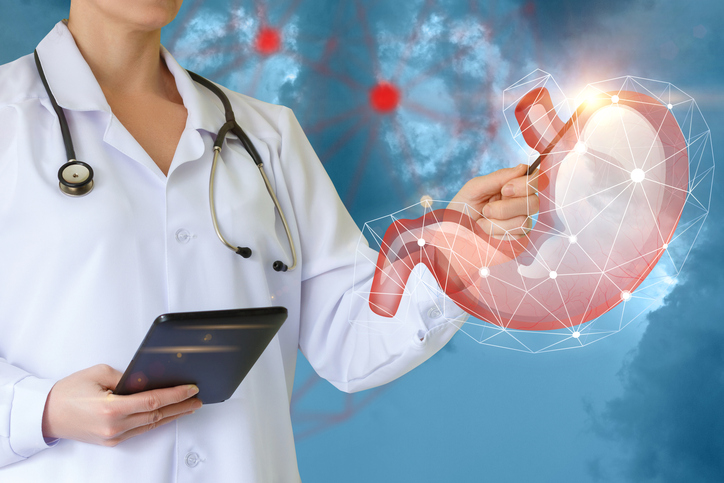A study from the Technical University of Denmark found that what is referred to as transit time or basically the faster our food can move from the time we eat it to the time of what’s left of it when it leaves our body, the better for our gut health. The longer food stays in our digestive tract, the more harmful bacteria degradation products are produced. A shorter transit time means a healthier digestive system helping us feel better.
Our digestive health is a basic fundamental of keeping us healthy and feeling good each day. Having a persnickety turbulent tummy can ruin the best of days for us. By knowing certain tricks to eliminate or at least greatly reduce symptoms, you can avoid tummy troubles and begin to improve digestion today.
1. Eliminate too much sugar and fat
Too many calories from sugary, fatty or fried foods are hard to digest. They can irritate your stomach by slowing down the process of digestion creating a very full, uncomfortable feeling. Excess sugar makes your blood sugar skyrocket setting up an unhealthy duo of too much sugar in the bloodstream and too much insulin being pumped by the pancreas to compensate for the situation. The excess insulin means extra storage of calories contributing to weight gain.
The solution? Choose more fresh or frozen fruits and vegetables, whole grains, beans, nuts and seeds and choose meats lower in fat such as fish, poultry, lean beef and pork. Replace butter and margarine with olive oil.
2. Fill up with water
In order to digest food water is necessary. Good digestive health will not happen without adequate water intake. Water helps speed transit time of food through the digestive tract and prevents constipation by creating a softer, bulkier stool. Aim for 9-13 cups of fluid each day or until your urine looks clear.
3. Move more
We all see what exercise can do for how we look on the outside but keeping active also does wonders for us on the inside. Physical activity is vital for good digestive health. It stimulates blood flow to all organs including the gastrointestinal tract while stimulating and toning muscles within the stomach and intestines keeping contents moving quickly. Aim for at least 30 minutes each day but avoid strenuous workouts right after eating.
4. Include probiotics
Our gut needs to be feed healthy food but it also requires live microorganisms for the good bacteria to nibble on. The best source of this is supporting our immune system and achieving a digestive tract in tip top shape. Best food sources containing probiotics are yogurt, kefir, sauerkraut, miso soup, soft cheeses like gouda, sour pickles, tempeh, or acidophilus milk.
5. Slow down when eating
Our digestive system doesn’t like to be rushed so that means slow down when eating. Taking time to eat gives the stomach ample opportunity to properly digest and absorb the nutrients within food and allows your body and brain to give you the signal when you’ve had enough. Turn off the TV and resist looking at your computer or smartphone while eating – distracted people will eat significantly more food than when they put the focus just on eating.
6. Eat more fiber
For a substance that really doesn’t get absorbed in our body, we depend on it a lot to keep our digestive tract purring like a kitten. Fiber comes in two types – soluble and insoluble. Soluble fiber dissolves in water helping slow down digestion and absorption making you feel fuller longer. It also slows down the amount of glucose entering into the bloodstream keeping blood sugar levels at a more even level. Insoluble fiber passes through unabsorbed but it attracts water to it in the colon creating a softer, bulkier, easier-to-pass bowel movement, reducing constipation and pain.
7. Achieve and maintain a healthy body weight
A healthy body weight is associated with less symptoms of gastroesophageal reflux disease (GERD). This condition allows contents from the stomach to backflow into the esophagus due to a weak valve that doesn’t close completely between the stomach and esophagus. The strong stomach acid backs up into the esophagus causing unpleasant symptoms of pain, burning and irritation of the lining of the unprotected esophagus. Losing excess weight reduces the pressure and can help avoid heartburn and other discomfort.
Learn how to achieve a healthy body weight by visiting here.
























































































